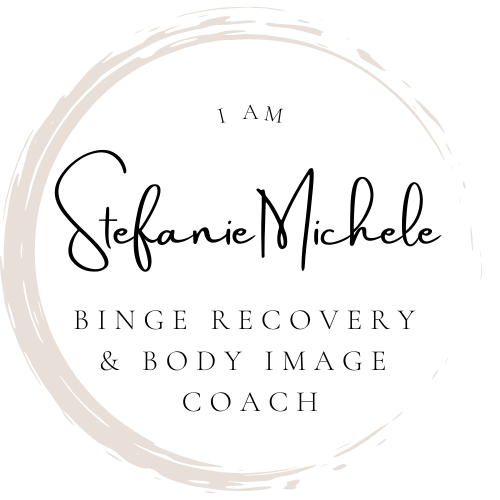How Can Somatic Work Help Someone with Food and Body Image Issues?
Technically, I started “working on” my nervous system a couple of years into recovery after realizing how much it intersected with my ability to stay regulated and recovered. But informally, I think it actually began with recovery. Food stabilization is crucial to anxiety and depression management.
Here is some information on the intersection of somatic work and recovery from eating disorders, disordered eating, and body image:
BUT FIRST — WHAT IS SOMATIC WORK, ANYWAY?
Somatic (meaning: of the body) work is an approach to healing that addresses the body's experience of stress, whereas traditional therapies tend to address the mind. Psych Central defines it as "a body-oriented approach to psychology." The idea is that the body stores emotions (just as the brain houses thoughts) that can become trapped in the nervous system, especially after trauma or stress. Somatic work aims to resolve stress through things like movement, breathwork, interoceptive awareness, sensory integration, etc.
#1: It brings the body back online.
People who experience disordered eating and body image issues tend to be disconnected from their bodies. Being "in" the body might be linked to overwhelming stressful emotions, so we might become overly cerebral and intellectualize emotional experiences as a preferable way of coping. Somatic work helps reintegrate the body slowly and safely, which can help get back in touch with things like hunger and fullness.
#2. It helps organize the mind.
One way that I have found support through somatic therapy is by getting out of only my mind. I believe that constantly rerouting emotions through my intellect has led to an overtaxed cognitive system, and the mind cannot be solely responsible for processing what also needs to be organized through the body. For me, this has shown up as anxiety and/or depression (a state of fight/flight or freeze). By allowing my body to take on some of that processing, I've been able to find clarity that exists outside of logic and language -- a sense of resolution and calm that transcends intellect.
#3. It offloads the burden from food.
Food is a sensory experience. It integrates sight, smell, sound, taste, and touch (via texture, pressure, temperature, vibration, etc) in a way that almost no other day-to-day experience can. Food is actually a way that we may instinctually be seeking to integrate the body and/or to drown out its cues by numbing/overriding them. It is extraordinarily resourceful, even though we do it outside of conscious awareness. When we use somatic work, we decrease the burden of responsibility of food to do this work alone.
#4. It addresses the “other track.”
If you've ever heard me talk about body image, you'll know that I describe those episodes of acute body anxiety as a "flood." A flood is the emotional overwhelm that accompanies the surge of stress hormones like cortisol and adrenaline in reaction to a perceived threat (ie. my body is too big, I am not safe!). We can use our intellect to help us through by reminding ourselves that these thoughts are rooted in fatphobia, that body size is not a moral issue, that diet culture has ingrained these beliefs to keep us buying their products and wielding power over women. But there is another layer of reaction in the body that transcends cognition. This reaction lives in the nervous system, and somatic work can help us ride that flood where intellect cannot quite touch.
#5. It gives us a sense of our own boundaries.
When we are cut off from our bodies, we have decreased proprioception. Proprioception is the body's sense of itself in space; someone with decreased proprioception may be somewhat "clumsy," for example. But I believe that a decreased sense of proprioception shows up emotionally as well -- if we don't have a sense of our physical boundaries, we may not have a sense of our emotional ones either. We may also lack the understanding of where our body begins and ends, and as a result may feel that we just go "on and on" -- that we are an ever-expanding physical and emotional mass, something "too big," something bottomless. Gaining a sense of where we are in space can help us understand that we are not, in fact, too big or bottomless.
#6. It offers us a new experience of our body’s role and value.
If we only value our body for its appearance, we lack appreciation for its role in the above slides (in both the public and extended posts). Our body is an important part of our lived experience that can help us feel calm and connected, to understand ourselves and our life experience. It houses incredible tools for self-regulation and gives us constant information about everything we encounter. When we understand the body as a resource rather than a burden, we may learn to appreciate it in ways not otherwise taught to us in a culture of objectification.
Somatic and nervous system work have helped me immensely in recovery maintenance. I am currently building courses around this topic and work 1:1 as available to address healing through a somatic lens.
If you are interested in learning more about how to work with me to help regulate your nervous system and explore somatic healing, apply here.

